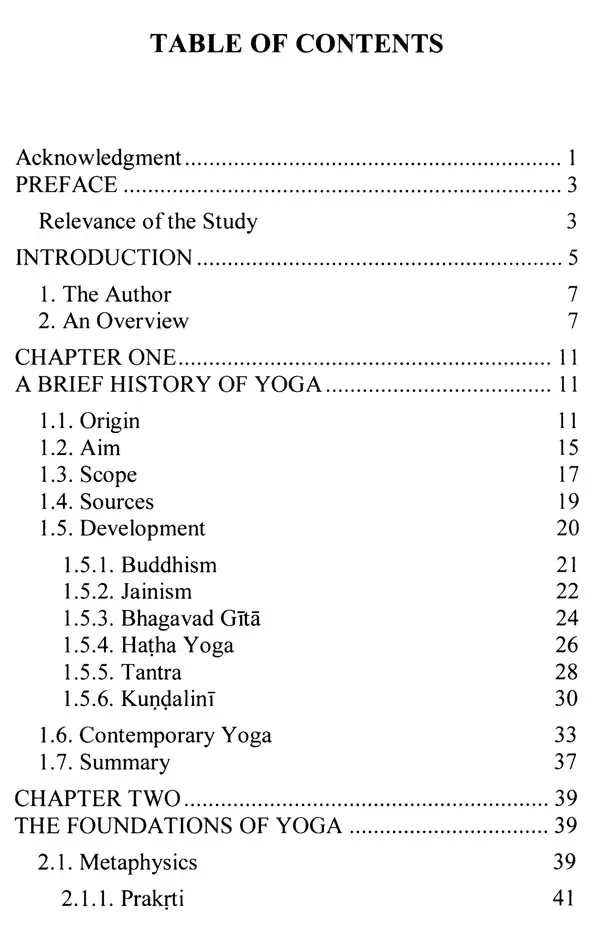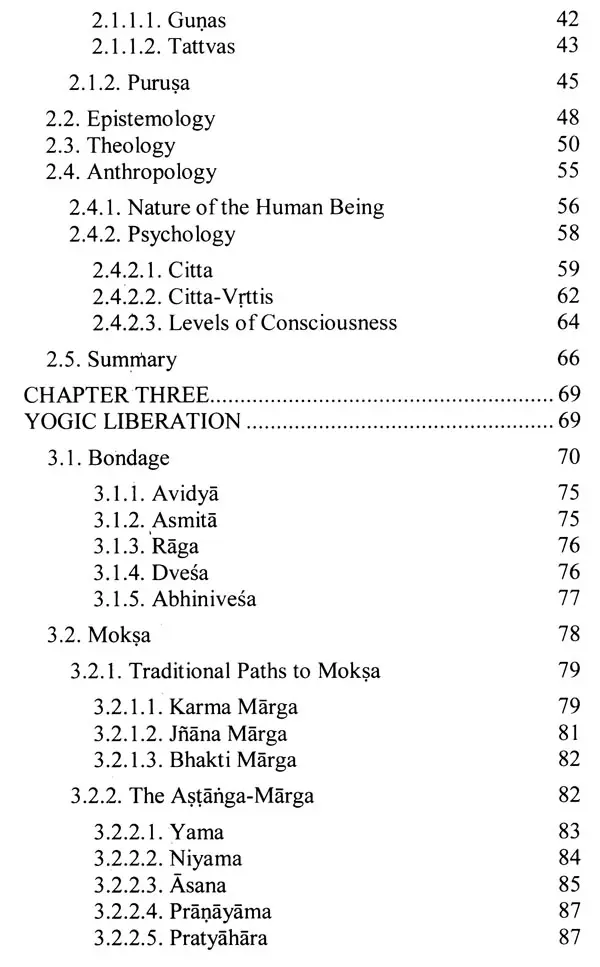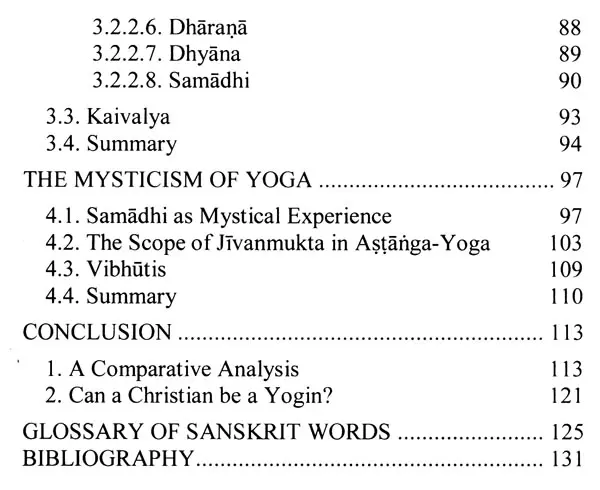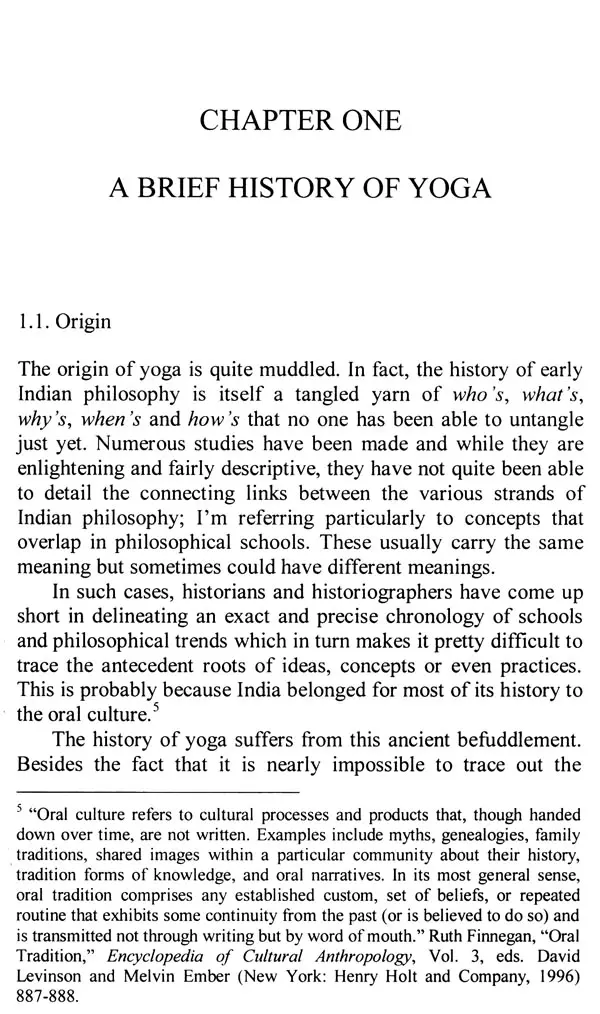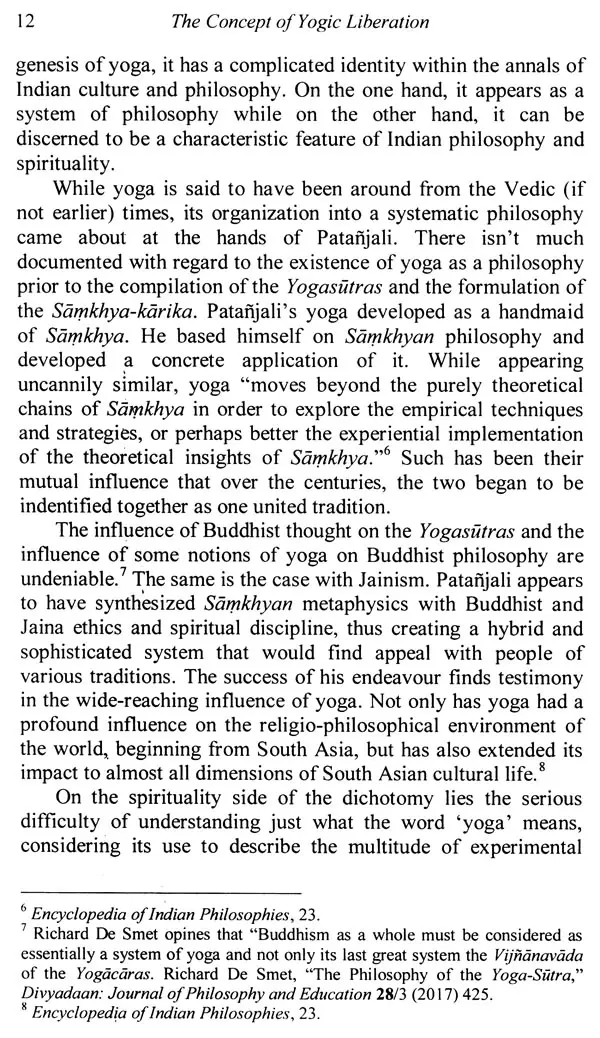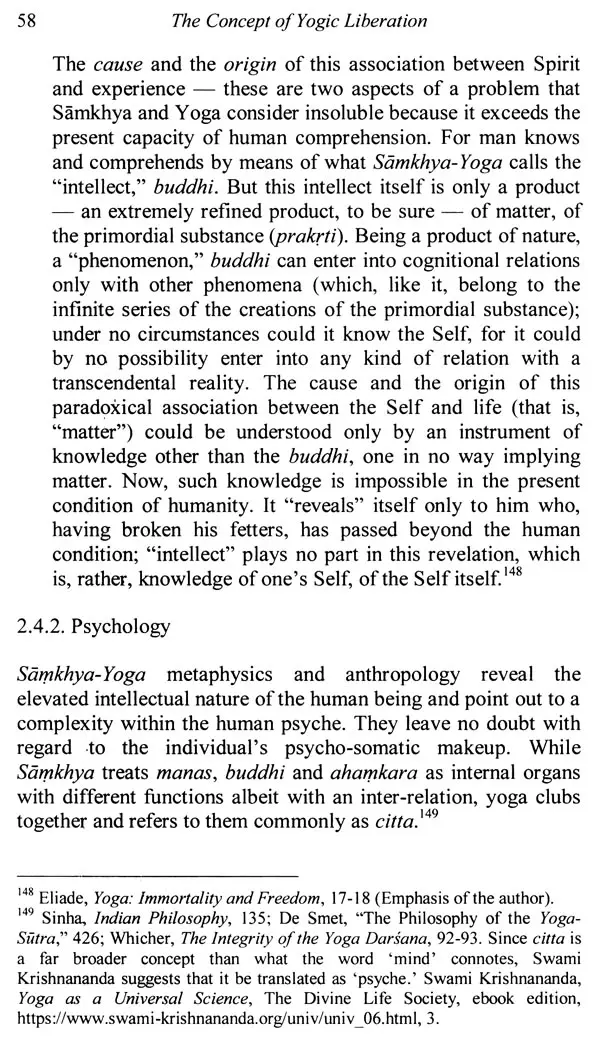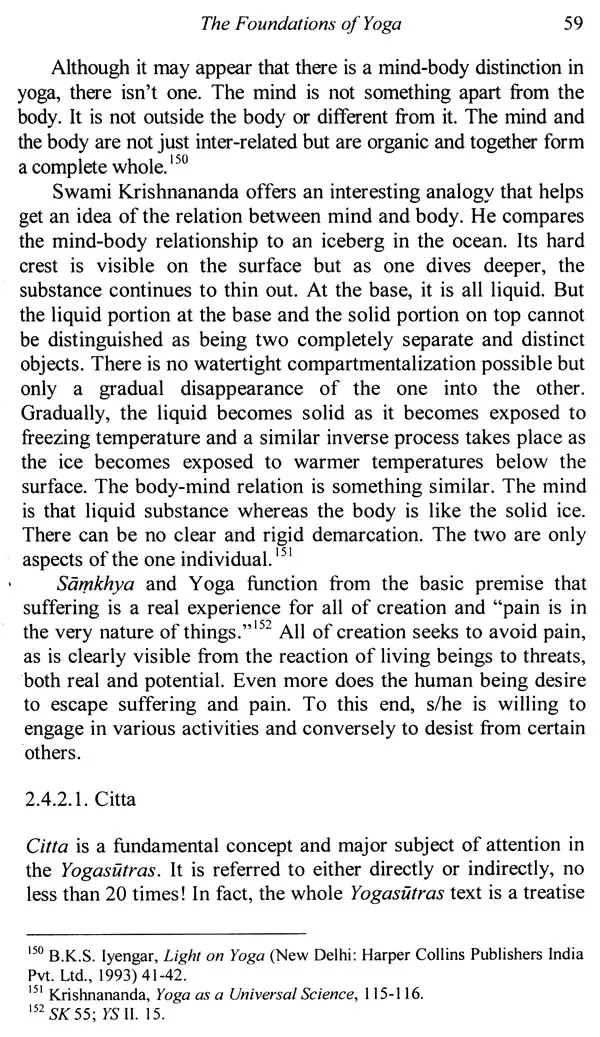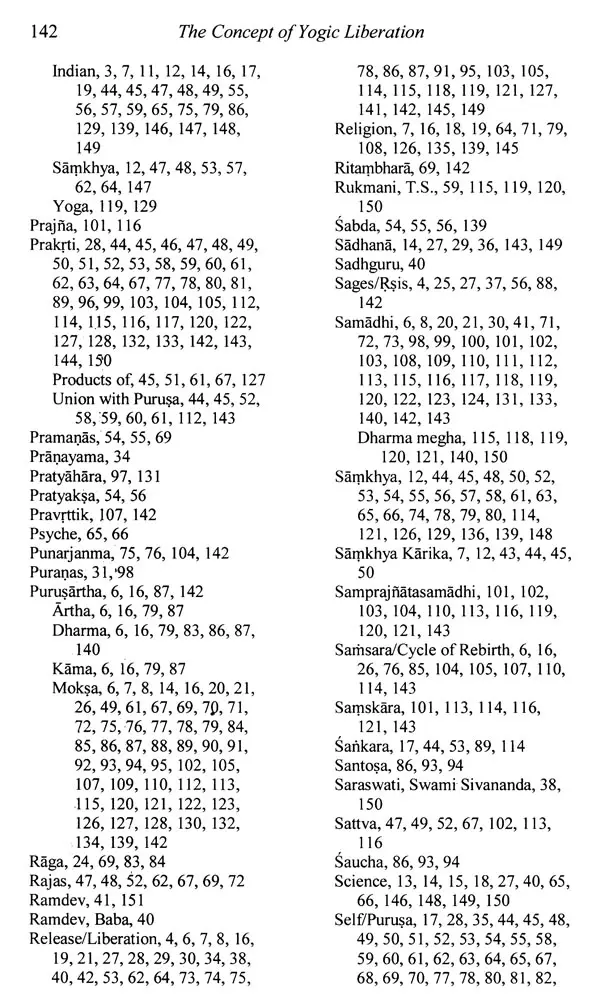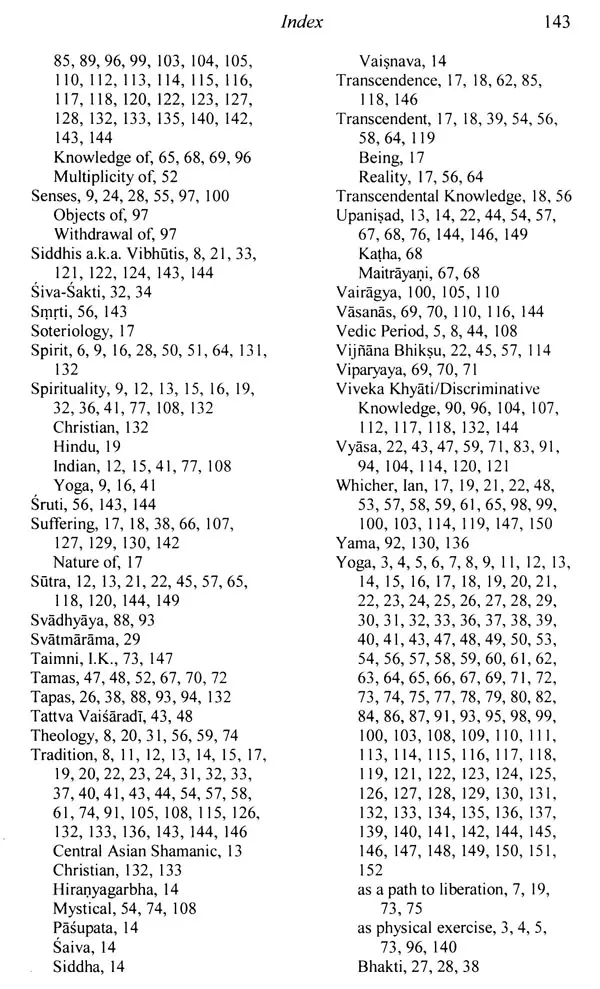
The Concept of Yogic Liberation- Moksa in Patanjali Yoga
Book Specification
| Item Code: | UAD504 |
| Author: | Ian Pinto |
| Publisher: | Motilal Banarsidass Publishing House, Delhi |
| Language: | English |
| Edition: | 2021 |
| ISBN: | 9789391024451 |
| Pages: | 150 |
| Cover: | PAPERBACK |
| Other Details | 8.50 X 5.50 inch |
| Weight | 190 gm |
Book Description
The primary goal of yoga is the liberation of the individual and since this also happens to be the goal of traditional Indian philosophizing, yoga found itself becoming an integral part of Indian religious practice.
, In order to find out the intended nature of yoga, I decided to go back to its roots, that is, the Yogasatras of Patanjali. I felt that studying these sutras would help me develop a clear idea about yoga and its purpose, which in turn would help me discover whether or not it is truly incompatible with Christianity.
Relevance of the Study
Yoga is a global phenomenon. The number of people from all faiths, backgrounds, cultures and walks of life engaged in it are increasing steadily. What is it that draws people to yoga? This is one of the key questions that awakened curiosity within me.
Personally, I never took a fancy to yoga as a form of exercise. I intend to study it objectively with an open and curious mind with the hope of discovering its intrigue and charm. Also I am curious to find out the actual philosophy behind yoga. In today's world, yoga is being promoted as a form of exercise but behind the facade lays a philosophy and I intend to find out what it is.
Considering the increasing popularity of yoga, I find this study very relevant. It will serve as a basis for understanding and subsequent dialogue on the topic of yoga besides, offering a Christian understanding of yoga and settling the nagging question of whether a Christian can practice yoga.
Yoga entered the West mostly as a physical exercise and often not as the holistic worldview it was in its original contexts. Devout practitioners are well aware of yoga's promise of freedom through the adoption of a specific way of life, defined by ethics, exercise and meditation. Increasingly, however, Westerners are becoming aware of the ethical and meditative dimensions of yoga and these elements are finding their way into the practice of yoga outside India.
Historians claim that the roots of yoga go back to the earliest period in Indian history. Figurines and seals found at sites of the Indus Valley Civilization, dating back to the 2nd century BCE, have been taken to be indicators of its practice already then. In .particular, one seal depicts what appears to be a deity sitting in a posture typical of yoga. In the earliest Sanskrit texts of the Vedic period (c. 1500-1200 BCE) there are references to ascetics and ecstatic called munis (silent sages), who are described as possessing some of the superhuman powers associated with advanced yoga practice.
Yoga was formally synthesized in the Yogasatras by Patafijali. Scholars agree that this is perhaps the earliest and most systematic treatise on the subject. The Sanskrit term yoga comes from the root 'yug,' meaning 'to control', 'to yoke', 'and to unite'.
Therefore, yoga is taken to mean the 'union of body, mind and spirit.' In a theistic context, it serves as the method for achieving union of the individual soul (atman) with the Universal Spirit (Paramatmana).
Yoga is found in Hinduism, Buddhism and Jainism besides all of the astika schools. It is presented as both a theory and a practice with a strong spiritual inclination: liberation or Samadhi from the tiresome world of samsara (transience). It is a philosophy of life aimed at establishing a thorough mental, physical and spiritual discipline, and a healthy, balanced approach to life.
Indian culture traditionally presented four goals or values of human life called the purusarthas. These are kama (pleasure), earth (possession), dharma (morality/duty) and moksa (liberation). These four were identified as the primary desires innate in every human person. Of these, moksa is considered the supreme goal parampurusarthay simply because the other three cannot fully satisfy an individual as they are ephemeral and subject to the Law of Karma. Moksa, on the other hand, is of more worth since it redeems once and for all, from the cycle of rebirth and hence ensures one's eternal bliss (ananda). While the other three, have their own legitimate place in life, they are incomplete by themselves and are meaningful only to the extent they contribute towards the attainment of moksa.
The key focus of nearly all Indian philosophizing is moksa.
Book's Contents and Sample Pages
